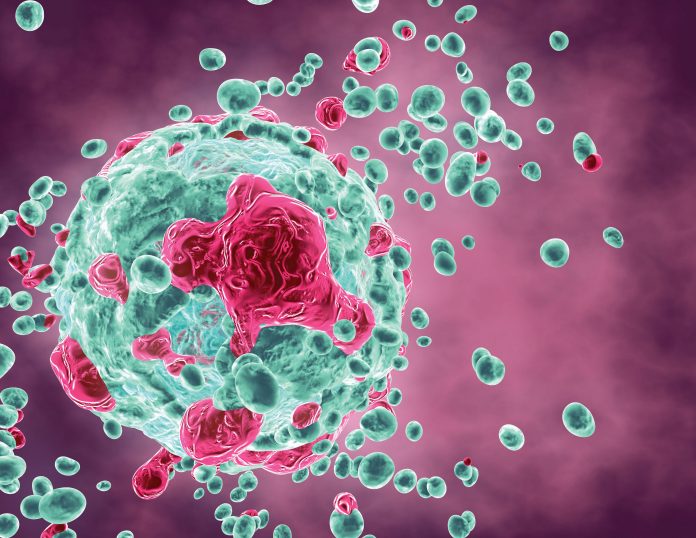
Two of the most common genetic changes that cause cells to become cancerous, which were previously thought to act separately, are working in concert. A team led by University of Wisconsin–Madison cancer researchers, Richard A. Anderson and Vincent Cryns, has described a direct link between the p53 and PI3K/Akt pathways as well as proteins that play critical roles in this process.
Their findings, published this week in Nature Cell Biology. Since researchers typically focus on drugs that block one or the other for cancer treatment, understanding these pathways’ cooperative effects may lead to more effective treatments. While research into cancer genomics is booming, currently about 30% of cancers have no known driver mutations.
“We have known for some time that lipid messenger molecules that activate the PI3K/Akt pathway found in membranes are also present in the nucleus of cells,” says Anderson, a professor at the UW School of Medicine and Public Health. “But what they were doing in the nucleus separate from membranes was a mystery.”
Cellular signaling pathways allow cells to accomplish important communications tasks that maintain healthy functions. The protein p53 acts inside the cell nucleus to respond to stress, but mutations of the p53 gene are also the most frequent genetic abnormalities in cancer. Mutations activating the PI3K/Akt pathway, located on the surface of cells, are also often implicated in cancer cell growth.
Mo Chen, an associate scientist and first author of the new study, used chemotherapy drugs to stress cancer cells and damage their DNA as they were replicating, or creating new copies of themselves. She discovered certain PI3K/Akt pathway enzymes bind to the mutated p53 protein in the nucleus of the cell and attach lipid messengers to p53, showing the two are directly linked. Instead of entering apoptosis these cancer cells repaired their chemotherapy-damaged DNA and went on growing and dividing, promoting cancer growth.
This pathway was previously thought to be confined to membranes. “Our finding that the PI3K/Akt pathway is anchored on p53 in the nucleus was entirely unexpected,” says Cryns, a physician-scientist and professor at UW School of Medicine and Public Health.
“These results also have critical implications for cancer treatment,” Cryns says. Current treatments that target PI3K may not work because they operate on a different enzyme than the one in the pathway the research team discovered.
The enzyme in the new pathway is IPMK and rendering it inactive keeps p53 proteins from binding with and activating the Atk pathway. This makes IPMK a promising new drug target.
The researchers also identified another enzyme, called PIPKIa, that is a key regulator of both p53 and Akt activation in the cell nucleus.
“What this means is that drug inhibitors of PIPKIa will reduce mutant p53 levels and block Akt activation in the nucleus, potentially a very powerful one-two punch against cancer cells,” Cryns says. Their team is actively searching for better PIPKIa drug inhibitors that could be used to treat cancers with p53 mutations or abnormally active PI3K/Akt pathway.













